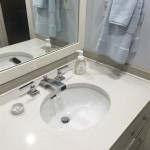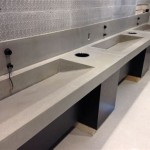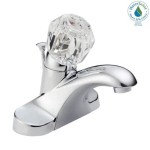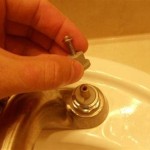Installing a Bathroom Exhaust Fan on a Sloped Ceiling
A bathroom exhaust fan is a crucial component of any well-ventilated bathroom. It helps remove moisture, odors, and contaminants, ensuring a healthy and comfortable environment. However, installing an exhaust fan on a sloped ceiling can pose unique challenges. This article provides a comprehensive guide to installing a bathroom exhaust fan on a sloped ceiling, outlining essential steps and considerations.
1. Planning and Preparation
Before initiating the installation process, careful planning and preparation are crucial. The following steps should be taken:
-
Determine Fan Size and Location:
Select an exhaust fan with a sufficient CFM (cubic feet per minute) rating for the bathroom size. Consider the fan's location, ensuring it's strategically placed to effectively remove moisture and odors. Avoid placing it near windows or doors to minimize draft. -
Check for Existing Wiring:
Verify if the bathroom has an existing electrical outlet and wiring dedicated to the exhaust fan. If not, you'll need to run new wiring from the electrical panel. -
Gather Necessary Tools and Materials:
Assemble the tools and materials required for the installation, including a stud finder, level, drill, saw, electrical tape, wire connectors, screws, and mounting brackets.
2. Mounting the Exhaust Fan
The mounting process for an exhaust fan on a sloped ceiling involves the following steps:
-
Locate the Joist:
Use a stud finder to locate a joist in the ceiling where the fan will be mounted. This ensures secure and stable installation. -
Attach the Mounting Bracket:
Secure the fan's mounting bracket to the joist using screws. Ensure the bracket is level and properly aligned. -
Connect the Wiring:
Disconnect the power supply to the circuit. Connect the fan's wires to the electrical outlet using wire connectors. Secure connections with electrical tape. -
Mount the Fan:
Install the fan onto the mounting bracket, ensuring it's properly secured and aligned. -
Install the Vent Duct:
Connect the fan's vent duct to the exhaust vent on the roof or wall. Use duct tape to secure the connection.
3. Final Touches and Testing
After completing the installation, the following steps are essential:
-
Reconnect Power:
Reconnect the power supply to the circuit and test the fan's operation. Ensure it's functioning properly and that the vent duct is properly connected. -
Adjust the Fan Speed:
Some exhaust fans have multiple speed settings. Adjust the fan's speed based on your ventilation needs. -
Seal Gaps:
Seal any gaps around the fan and vent duct with caulk or sealant to prevent air leaks.
Installing a bathroom exhaust fan on a sloped ceiling can be challenging, but with careful planning and attention to detail, it can be accomplished successfully. Remember to prioritize safety and consult with a qualified electrician if necessary. By following these steps, you can ensure proper ventilation in your bathroom, creating a healthier and more comfortable environment.

Venting A Bathroom Through Sips Fine Homebuilding

Venting A Bathroom Through Sips Fine Homebuilding

Venting A Shower In Vaulted Ceiling Building Greenbuildingadvisor
Cathedral Ceiling Ventilation Architecture Design

Venting A Shower In Vaulted Ceiling Building Greenbuildingadvisor

How To Install A Bathroom Fan Diy Family Handyman
Insulating And Venting A Vaulted Bathroom Ceiling Contractor Talk Professional Construction Remodeling Forum

Is This Bathroom Vent Ed Up Greenbuildingadvisor

Fans On An Angle Installing Ceiling Angled Or Raked

Bathrooms With Sloped Ceilings Fine Homebuilding
Related Posts







